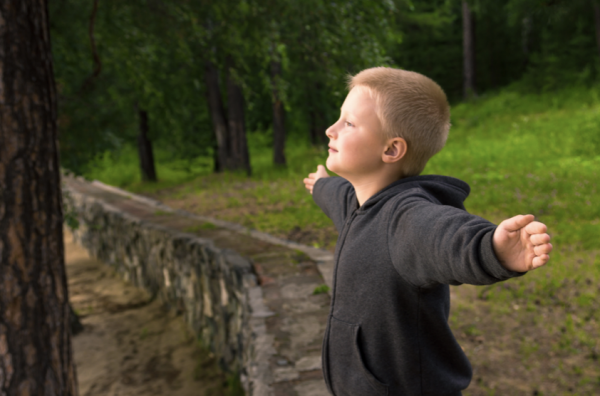Getting children moving is an important factor in gearing them up for their greatest potential. Practicing healthy breathing techniques is also a key element in physical, mental and emotional well-being. Both of these practices help with their physical development and emotional regulation. Here are some of the wonderful benefits of activity and deep breathing for your child, as well as strategies in practicing them.

Getting your child active from an early age establishes healthy habits in their body and in their lifestyle. Everything from developing their lungs, balancing their blood sugar, and strengthening their bones can occur with regular movement. Along with the physical benefits, being active aids in emotional control and learning comprehension. Studies consistently show that getting children moving activates parts of their brain that allow for greater understanding when learning new skills. It also releases endorphins that aid in a happier demeanor and outlook. It increases levels of serotonin, which is a chemical that regulates mood and can even help fight some neurological diseases according to recent studies.
Breathing techniques are also an important part of physical and emotional well-being. It is great to pause and take deep, soothing breaths throughout the day instead of reserving them for stressful situations. Regulating your breathing (and consequently your mood) can positively impact your entire day. It infuses the body with more oxygen, which enables the body's breathing to be consistent, the muscles to relax, the heart rate to become steady, and digestion to regulate. All of these consequences of deep breathing will help benefit you and your child's body and mind throughout the day.
To help your child practice deep breathing, use tools to make it fun and get in the rhythm! Start out with bubbles. Illustrate long, consistent breath and help your child practice. The longer and steadier the breath, the bigger the bubbles. Next, break out some of your child's favorite stuffed animal friends. Put one on your child's belly and one on your own. Help them notice how their animal friend raises up when they take a deep, belly breath, and then back down when they let it out. This helps them practice full breaths, while having fun doing it.
Keep in mind that all of these movement and breathing facts are true for both you and your child! Our schedules are busy and chaotic. Don't feel pressured to get one big active session in. Practice motion and breathing in bursts whenever and wherever you can. Take five minutes to have a dance party, do some yoga, run around the backyard, or do some belly breathing. Having that time with your child will benefit you both as you grow together.
Breathing techniques are also an important part of physical and emotional well-being. It is great to pause and take deep, soothing breaths throughout the day instead of reserving them for stressful situations. Regulating your breathing (and consequently your mood) can positively impact your entire day. It infuses the body with more oxygen, which enables the body's breathing to be consistent, the muscles to relax, the heart rate to become steady, and digestion to regulate. All of these consequences of deep breathing will help benefit you and your child's body and mind throughout the day.
To help your child practice deep breathing, use tools to make it fun and get in the rhythm! Start out with bubbles. Illustrate long, consistent breath and help your child practice. The longer and steadier the breath, the bigger the bubbles. Next, break out some of your child's favorite stuffed animal friends. Put one on your child's belly and one on your own. Help them notice how their animal friend raises up when they take a deep, belly breath, and then back down when they let it out. This helps them practice full breaths, while having fun doing it.
Keep in mind that all of these movement and breathing facts are true for both you and your child! Our schedules are busy and chaotic. Don't feel pressured to get one big active session in. Practice motion and breathing in bursts whenever and wherever you can. Take five minutes to have a dance party, do some yoga, run around the backyard, or do some belly breathing. Having that time with your child will benefit you both as you grow together.



